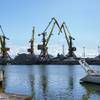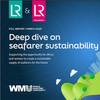Global Warming Melts New Sea Lanes for Norilsk, ConocoPhillips
Global warming, while threatening environmental disasters, is creating economic opportunity for shippers, makers of ocean cargo vessels and tour operators. New routes may expand access to the world's second-biggest oil supply, deliver U.S. wheat to Asia 30 percent faster and increase Arctic tourism as much as 50 percent in a decade. Ice shrinkage may enable ships to sail straight over the top of the world, cutting an 11,000-mile (17,699-kilometer) trip to 7,000 miles and saving as much as 11 days and $800,000 in fuel and labor. Investment in reinforced vessels jumped fivefold to $2.5 billion in 2006 from $500 million in 1999 and may climb 10 percent a year through 2010, London-based shipping broker Clarkson Plc estimates.
Temperatures above the Arctic Circle have risen at about twice the rate of the global average in the past three decades, United Nations data show. Arctic sea ice shrank to the smallest area on record last summer, covering 22 percent less than the previous low in September 2005, says the U.S. National Snow and Ice Data Center in Boulder, Colorado.
Norilsk is shipping nickel, copper and palladium north of Siberia to Europe from the Taimyr Peninsula in Northern Russia. One reinforced ship is already in service and four are being built by Aker Yards for delivery by mid-2009, all using new hull designs that allow for bow- or stern-first sailing, depending on the thickness of the ocean surface. While Norilsk and others may benefit from the melting, Borodin says the ship orders were driven by cost calculations rather than global warming. Most of the Siberia route is navigable from June through September, and it may become the first trans-Arctic channel open to reinforced vessels, say scientists.
Investment is under way. The portion of the world's commercial tankers that can ply frozen waters will rise to as much as 10 percent in 2008 from 3 percent in 1992, Clarkson estimates. As of December, the order backlog for reinforced ships stood at 152, almost half the size of the current worldwide fleet of 352 such vessels. Source: Bloomberg













